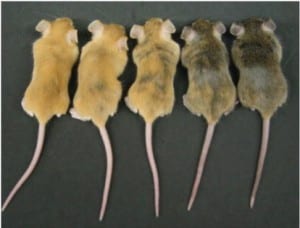UCL Prize Lecture in Clinical Science
By news editor, on 3 October 2012

Professor Jeffrey Friedman (centre) receives the
UCL Prize Lecture in Clinical Science Medal from
UCL President and Provost, Professor Malcolm
Grant (right), and Professor Tony Segal.
![]() Written by guest blogger, Marianne Neary, MBPhD student
Written by guest blogger, Marianne Neary, MBPhD student
Yesterday a group of UCL MB PhD students met Professor Jeffrey Friedman for afternoon tea in the Wilkins Terrace restaurant. We were granted the honour of a private audience before his UCL Prize Lecture in Clinical Science.
In 1994 Professor Friedman, and his colleagues at the Rockefeller in New York, made a landmark discovery which armed obesity researchers with a new weapon in the battle against widening waistlines and burgeoning bum-prints.
It saw the dawn of obesity genetics as Professor Friedman and his team identified the ‘obese’ (ob) gene in mice and humans. This gene codes for a hormone he later named leptin.
 Close
Close




